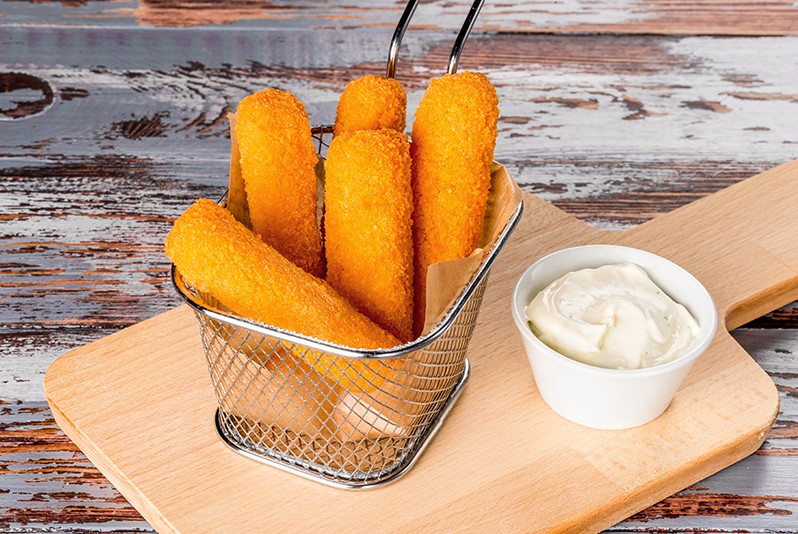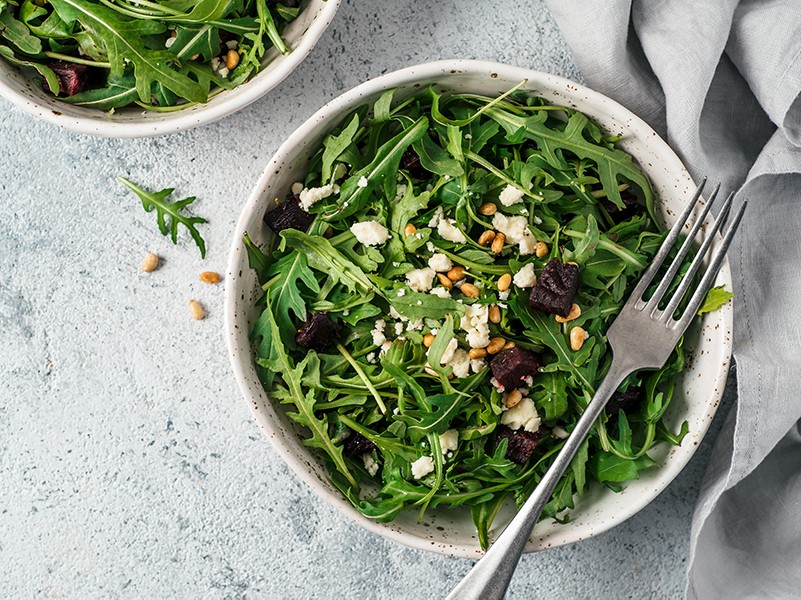Finding Profitability in Your Menu: a Data-Based Recipe for Success

Winter restaurant sales can be unpredictable. Customer traffic fluctuates, whether it’s due to post-holiday lulls or uncooperative weather, so it’s no surprise that January and February can be difficult months for restaurant revenue.
When sales and customer traffic are down, restaurateurs look for ways to cut costs and increase revenue. They often focus on the menu in pursuit of those initiatives – with good reason. Your menu ultimately holds the key to your profitability, but creating a profitable menu is a precise balancing act. It’s important to approach changes with careful consideration.
Menu Pricing Changes
Russ Spencer, a Restaurant Operations Consultant (ROC) for US Foods®, has been in the restaurant industry for more than 30 years and is an expert in menu profitability. In his experience, finding ways to save money is always a good thing for restaurants. However, he also says, “It’s ultimately about making money. It’s unlikely that I’ll be able to help a restaurant save 45%. But I can help them make it by focusing on an engineered menu designed to increase gross profit and cash flow to the bottom line.”
When menu changes are in order, operators are likely to attempt to increase revenue by manipulating menu pricing and lowering food costs. But before manipulating menu prices, it’s a good idea to consider the following:
- Raising prices risks scaring off customers or making them price-conscious when placing their orders
- Lowering prices to increase customer traffic can damage their impression of your restaurant’s value, eroding even more profitability
- Substituting items in a dish for less expensive ingredients can sacrifice the quality of your menu and won’t generate significant profit
- The price of your menu items should always be based on your sales data
In short, substituting ingredients may impact the integrity of your dishes, can complicate your vendor relations and won’t necessarily deliver the desired profitability increase. And altering your prices without concrete analysis is unwise. A smarter, more effective strategy to increase profits is to optimize your menu.
Menu Engineering 101
In order to optimize your menu, you have to evaluate it first. Start by determining the precise food costs of the items being analyzed. Food cost includes the total cost of the goods for the menu item, minus the sale price to determine the gross profit of each item on the menu.
Next, determine the popularity of the items to measure how each dish contributes to the overall financial performance and success of the current menu. A dish with a low plate cost won’t help your overall profitability if it’s unpopular with customers. It’s the combination of profitability and popularity that makes a dish great for the bottom line.
In Russ’ experience, a common mistake operators make is focusing on creating dishes with a low food cost. Instead, focus on offering items that drive the most gross profit to the bottom line.
He says, “I would rather sell one ribeye steak at 40% food cost and make $16 instead of selling four burgers at a 27% food cost and only make $4 per burger. Over the course of a week, I would need to sell four burgers using more labor dollars to yield the same as one ribeye.”
If you have a performance software program running on your point of sale (POS) system, like Avero, you’ll save an exponential amount of time in the evaluation process. Avero automatically tracks every order placed through the POS, which means that you can determine the popularity of any item on the menu with the push of a button. Simply choose a set period and run an item category sales report for the items you're analyzing. Avero also helps track inventory and stores the last purchase price for every item in your orders so you can quickly determine your real-time food costs, which is important since the price of key ingredients like produce and center of the plate proteins are likely to fluctuate.
Once you have identified both the plate cost and popularity of the menu items in question, you can start to plot your menu on a matrix that includes:
- Stars – dishes that are popular and have a high profit margin
- Dogs – dishes that are both unpopular and unprofitable
- Plow Horses – dishes that are popular but have a low profit margin
- Puzzles – dishes that aren’t popular, but have a great profit margin
It’s a good idea to evaluate the key sections of your menu separately so you’re comparing items in one category at a time. Be sure to review key sections such as appetizers, entrées and alcoholic beverages. Don’t forget to consider specialty menus if you offer alternate services like online/takeout menus, in-room dining, late-night bar menus, etc.
Take a look at our Menu Engineering Quick Start Guide for a deeper dive into the fundamental concepts of menu optimization and ways to get accurate baseline data quickly and easily.
Ditch the Dogs
With your matrix filled out and every dish plotted accordingly, you can start to make changes to increase profitability. Start with the least profitable and popular items: dogs. Dogs may be man’s best friend, but they’re no friend to a restaurateur. Your current dog menu items may have held a loftier position on your menu in the past. But as all restaurateurs know, trends matter. As customer preferences shift, so too should your menu.
While consulting for a restaurant in his territory in Missouri, Russ recommended dropping five dogs from the menu and replacing them with new, more appealing dishes. He also brought in the territory’s Food Fanatics® chef, a US Foods chef consultant, to help recommend and create new menu items that would be more popular with their customers.
In the appetizer category, the average gross profit of items was $7. The mozzarella cheese sticks were only bringing in a profit of $5. After analysis, they opted to replace the mozzarella sticks which were not particularity profitable or popular, with the chef’s recommendation for a new dish: wonton nachos.
Russ and the chef felt that wonton nachos would drive more excitement and hence popularity than the classic cheese sticks. And in light of current dining trends, wonton nachos would likely garner a higher price than the cheese sticks. The restaurant operator agreed to put the nachos on the menu, but at what price?
According to Russ, “If a restaurant doesn’t truly understand food costs, they may think that charging a dollar more for the nachos than the cheese sticks will also help improve profitability. But if the plate cost of cheese sticks was $2 and it was priced at $7, and the plate cost of the nachos is $4, and they priced it at $8, they’ve just made a bad decision, driving excitement for a new trendy item that creates even less profitability in their menu.”
Instead, they decided to price the nachos at $11, resulting in a $7 profit. Now, the profitability of dishes in the appetizer category are in alignment, which will also prevent the new nachos from cannibalizing other popular and profitable appetizers.
The true genius of this pricing strategy is that it’s beneficial during slow and peak periods. “If business is hopping and you’re on a wait, and you can’t turn tables any faster, you have to think about what you can do to impact your bottom line with the traffic you have,” Russ said. Being thoughtful about your margins and balancing the product mix in your menu will go a long way towards maximizing your profitability.
Promote the Stars
Conventional restaurant wisdom says not to mess with stars. If a dish is profitable and popular, be wary of making significant changes to the dish. But that doesn’t mean you should ignore it.
Make sure your stars are visually optimized in their placement on the physical menu and keep promoting them in your marketing efforts. One strategy Russ recommends is to include stars and puzzle items in your employee discount and shift meal options, but never dogs or plow horses.
“Servers don’t always promote and suggest the items you want them to. They ultimately recommend what they like. So, if you give them a discount on the things you want them to promote, they’ll become brand champions because they’re genuinely passionate about them. If their passion aligns with your most profitable items, it’s a bonus,” Russ said.
Also consider that the profitability and popularity of items can change with the seasons. With that variability in play, it’s worth evaluating your menu during key periods of the year. A summer star may lose rank in the winter and vice versa. You might miss that important nuance if you look at the year as a whole instead of evaluating summer and winter separately.
For example, at a restaurant in Colorado, the star salad in the spring and summer contains fresh seasonal berries and goat cheese. During fall and winter months, it’s less popular, and less profitable since the cost of the key ingredients increases due to out-of-season pricing and the higher likelihood of spoilage. In the cooler, snowier months, the star salad features root vegetables and nuts. Rather than offering both salads year-round – enduring price changes for seasonal ingredients and carefully maintaining inventories for both, they simply offer the most popular salad for the season. In addition to saving money on out-of-season ingredients and simplifying inventory, it also keeps demand for both salads high.
Data-Backed Decisions
Russ is passionate about helping his US Foods customers make smart decisions about their menu, perfecting the product mix and making sure they’re getting the most value out of their groceries. When it comes to making menu changes, it all comes down to the numbers.
“No decision should ever be made without understanding how it will impact your profitability. Don’t just put something on the menu or pick a price without truly understanding what the impact is to your bottom line. And if you don’t cost things out, you don’t know,” Russ said.
How does he run the numbers? He uses Avero whenever possible. Like thousands of restaurateurs and consultants, Russ relies on Avero to instantly serve up the data he needs to make adjustments with precision and less legwork.
“If a customer doesn’t have Avero I have to do a lot more work to help them. Avero automates everything. It takes all the data you need and gives it to you in the exact way you want to look at it. It gives me the tools I need to be a very productive consultant and helps me teach my customers to eventually ride the bike without me,” he said.
Avero is integrated with US Foods to provide instant ordering, inventory management and easier food cost control. Plus, Avero offers historical sales data, server contests, an online logbook and much more.
Contact your US Foods representative to learn more about US Foods Restaurant Operations Consultants, Food Fanatics chefs and Avero’s restaurant performance software.
About Avero: Avero powers purchasing and inventory management as part of CHECK® Business Tools, and helps eliminate ordering guesswork, streamlines inventory counts and helps identify sources of waste. Avero also provides Restaurant Operations Intelligence, powered by Avero Sales & Productivity. Learn more about Avero by visiting Reduce Waste: Purchasing and Inventory Management in CHECK Business Tools.
Visit the CHECK Resource Center for more articles full of valuable insights, industry analysis and helpful tools that can help you grow your business.



